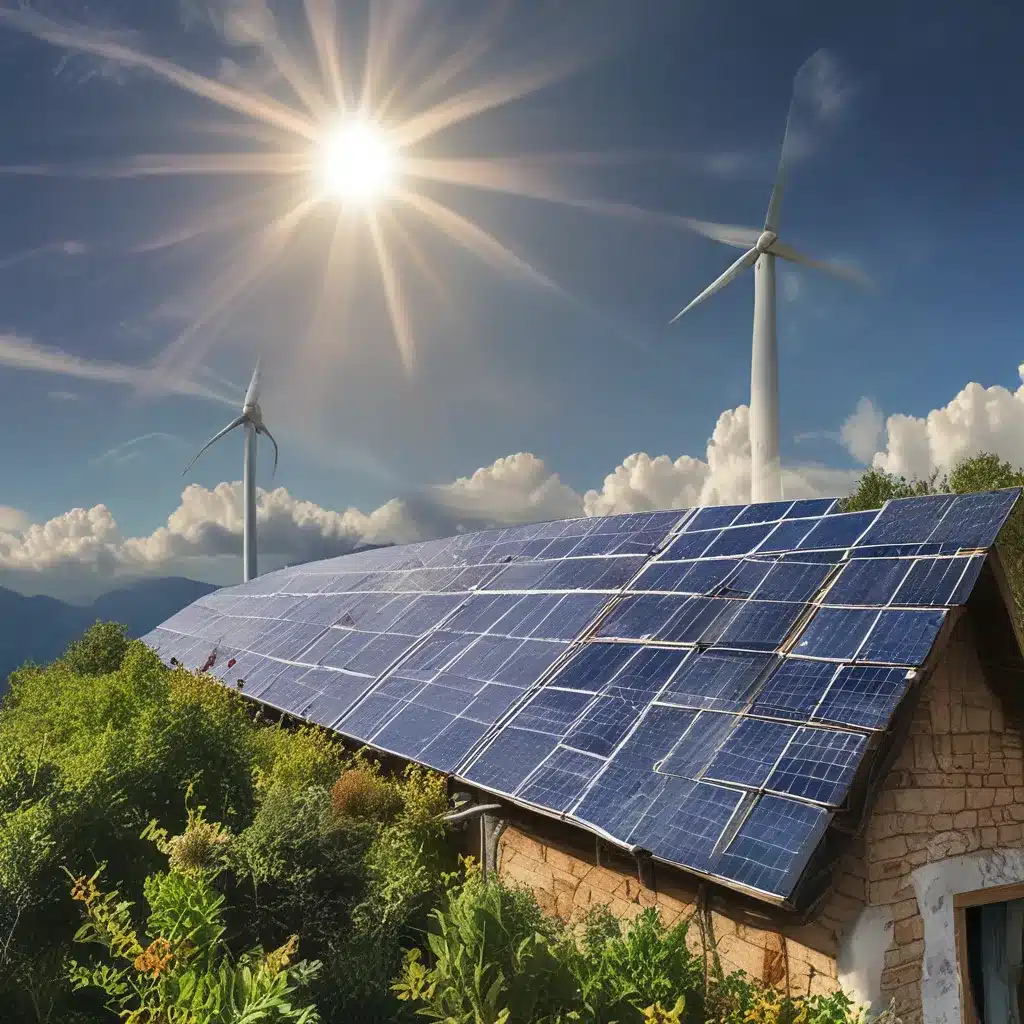
Solar Energy: A Sustainable Solution that Helps the Planet
The Power of the Sun: Unlocking a Cleaner Future
I’ll never forget the day I first learned about the power of solar energy. It was a sunny afternoon, and I was sitting in my backyard, soaking up the warmth of the sun’s rays. As I gazed up at the glowing orb, it struck me – this boundless source of energy has the potential to transform the way we power our world.
You see, I’ve always been passionate about the environment and finding ways to reduce our impact on the planet. The more I learned about the devastating effects of fossil fuels and the urgent need to transition to renewable energy sources, the more I became convinced that solar power was the answer. And let me tell you, once that spark is ignited, it’s hard to extinguish.
The Climate Crisis and the Role of Renewable Energy
The science is clear – the Earth’s climate is changing at an unprecedented rate, and human-caused greenhouse gas emissions are the primary driver. According to the United Nations, fossil fuels such as coal, oil, and gas account for over 75% of global greenhouse gas emissions and nearly 90% of all carbon dioxide emissions. If we don’t take drastic action to reduce these emissions, the consequences will be dire – more extreme weather events, rising sea levels, and far-reaching impacts on our ecosystems and the health of all living beings.
But the good news is that we have a powerful solution at our fingertips: renewable energy. The UN states that renewable energy sources, such as solar, wind, and hydropower, are replenished by nature and emit little to no greenhouse gases or pollutants. By transitioning away from fossil fuels and embracing these clean, sustainable options, we can play a crucial role in mitigating climate change and creating a healthier planet for generations to come.
The Bright Future of Solar Power
As I delved deeper into the world of renewable energy, I became fascinated by the incredible potential of solar power. The UN reports that the cost of electricity from solar power has fallen by an astounding 85% between 2010 and 2020, making it one of the most cost-effective energy sources available. And the best part? Solar energy is abundant, accessible, and can be harnessed in virtually every corner of the globe.
Imagine a world where our homes, businesses, and communities are powered by the sun’s limitless energy – a world where we no longer have to rely on the unpredictable and often politically charged fossil fuel industry. The UN estimates that 90% of the world’s electricity can and should come from renewable energy by 2050, and solar power is poised to play a crucial role in this transition.
Maximizing the Benefits of Solar Energy
But the advantages of solar energy go far beyond cost-effectiveness and climate-friendliness. According to the U.S. Department of Energy’s Solar Energy Technologies Office (SETO), solar energy can also improve air quality, reduce water use from energy production, and provide valuable ecosystem services for host communities.
Imagine a world where the installation of solar panels not only generates clean, renewable electricity but also sequesters carbon, supports pollinator populations, and helps manage groundwater and stormwater. It’s a win-win-win scenario that benefits the environment, the local community, and the planet as a whole.
Balancing Solar Development and Environmental Protection
Of course, as with any large-scale energy project, the development of solar energy infrastructure must be carefully planned and executed to minimize any potential negative impacts on the surrounding environment. SETO recognizes the importance of this delicate balance and supports research to better understand the interactions between solar energy, wildlife, and ecosystems.
By working closely with regulators, local communities, and environmental stakeholders, solar developers can identify strategies and technologies that avoid or mitigate any adverse effects on the natural world. This collaborative approach not only ensures the long-term sustainability of solar projects but also helps to build trust and support within the host communities.
The Path Forward: Embracing a Renewable Energy Future
As I look to the future, I can’t help but feel a sense of optimism and excitement. SETO’s research and technical assistance programs are paving the way for a solar-powered tomorrow that is not only environmentally responsible but also equitable and inclusive. By prioritizing the needs and values of underserved communities, we can ensure that the benefits of renewable energy are accessible to all.
And let’s not forget the incredible job-creating potential of the solar industry. According to the UN, the transition to net-zero emissions could lead to a net gain of 9 million jobs in the energy sector by 2030, with an additional 16 million jobs in related industries. This economic boon, coupled with the environmental and health benefits of solar energy, makes it clear that the path forward is bright, both literally and figuratively.
So, if you’re like me and you’re passionate about creating a more sustainable future, I encourage you to explore the incredible opportunities that solar energy has to offer. Whether it’s installing solar panels on your own home or advocating for renewable energy policies in your community, every step you take can make a real difference.
After all, the power to change the world is quite literally shining down on us every day. Let’s harness it together and create a brighter, cleaner future for all. Who’s with me?


